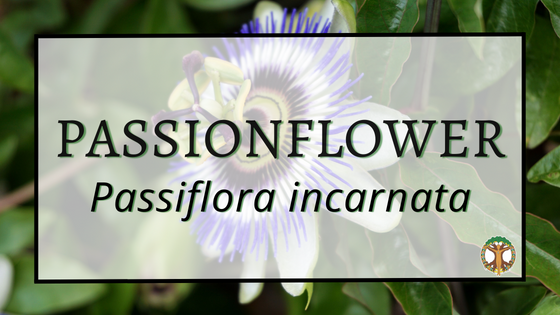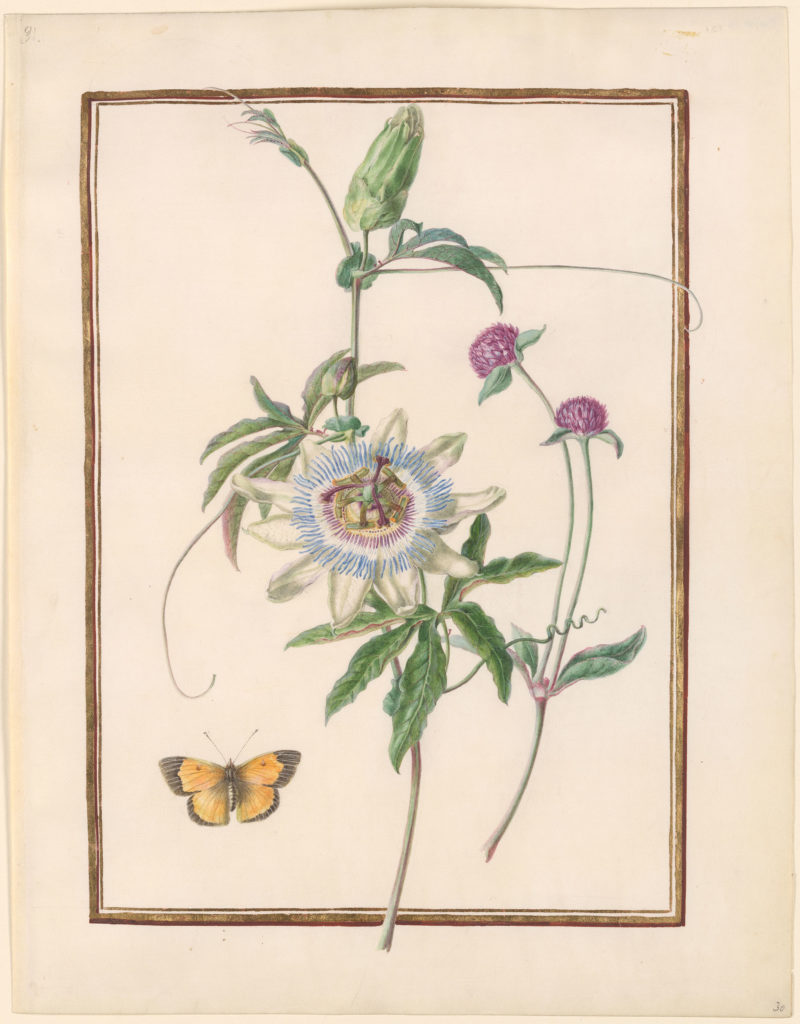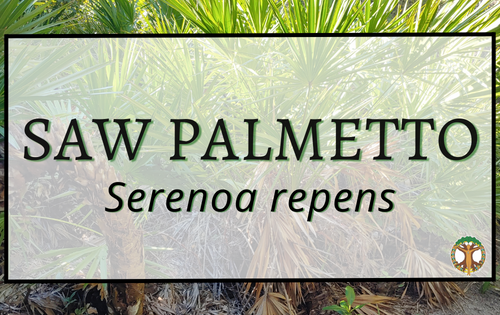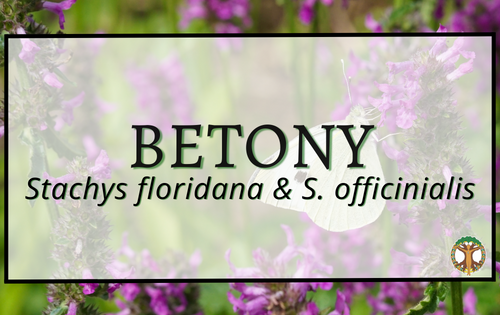
Passionflower
Contributed by B.B. Soto
Latin Name: Passiflora incarnata
Common Names: Passionflower, passion vine, maypop
Family: Passifloraceae
Habitat: This perennial herbaceous climbing vine is native to Central Florida and the southeast United States—found growing mostly from Texas to Florida. It grows easily by cutting and is happy in sandy Florida soil, sunshine, and rain. It also survives in both dry and wet weather, heat, and is cold tolerant. For tips on where to plant in your home garden, see Emily Ruff’s Passionflower Materia Medica Video.
Fun fact: Two Florida butterfly species, the Gulf Fritillary and Zebra Longwing, use the vines to lay their eggs so the hatched caterpillars can munch on the leaves, making it a beautiful garden addition to attract pollinators to your yard.
Parts Used and Uses: The fruit and flower are flavorful and can be used in cooking, but the leaves and vines are used for passionflower herbal remedies.
P. incarnata is best used in tinctures, teas, and encapsulations. It works well with many plant allies — Valerian and Hawthorn to aid digestive spasms, gastritis, and colitis. While not strong enough to be a singular painkiller, it works well with other anodyne herbs such as Jamaican Dogwood, Cramp Bark, and Valerian. Passionflower also pairs well with Motherwort for menopausal-specific insomnia, and Skullcap for bruxism (grinding one’s teeth during sleep).
Dosages are unique to the condition and person.
History/Tradition: The flower received its name because people saw it as symbolic of the Passion of Christ—its 10 petals represent 10 of the 12 disciples, excluding Judas and Peter, the 5 stamens represent the wounds Christ received, the knob-like stigmas resemble the nails, and the petals are like the crown of thorns.

Passionflower (Passiflora incarnata) (left). Globe amaranth (Gomphrena globosa) (right)
Watercolor over pencil on vellum.
via themorgan.org
Energetics: Maggie O’Halloran shares in her Passionflower Materia Medica Video that P. incarnata is great for “spiral thinking.” And other energetic uses of passionflower herbal remedies have been described to ground, calm, and help those who need to reconnect.
Systems: nervous system, gastrointestinal, cardiovascular
Actions: Cooling and drying, supports nervous system, mild pain relief (passiflorine compared with morphine), sedative, calming and lowers heart rate, calms physical manifestation of anxiety. Antispasmodic. Anxiolytic – calms anxiety.
Cautions: The sedative action is helpful for sleep blends, but be mindful of over consumption.
Not to be consumed with pharmaceuticals, especially MAOI anti-anxiety meds and other mental health medications.
For other pharmaceutical contraindications, consult a medical professional before consuming.
Culinary Use: Flowers and fruit are edible. Flowers can be used to make tea or tossed in a salad for a bit of sweet flavor. The fruit can be used as a flavor to yogurt, cottage cheese, smoothies, oatmeal, or in juice.
References:
Florida School of Holistic Living. (2020). Plant Profile: Passionflower with Maggie [YouTube]. Retrieved February 17, 2022, from https://youtu.be/rIrWvzt0PhE.
Florida School of Holistic Living. (2015). Plant Profile: Passionflower with Emily Ruff [YouTube]. Retrieved February 17, 2022, from https://youtu.be/TlogH6OD-yM.
Thompson, K. (n.d.). Passionflower Monograph [web log]. Retrieved February 17, 2022, from https://www.herbrally.com/monographs/passionflower?rq=passionflower.
Lady Bird Johnson Wildflower Center. (2020). Passiflora incarnata (Maypop). Native Plants of North America Plant Database. Retrieved February 17, 2022, from https://www.wildflower.org/plants/result.php?id_plant=pain6.






